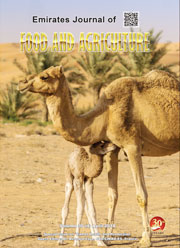MENDELIAN SEGREGATION PATTERN AND EXPRESSION STUDIES OF INSECTICIDAL GENE (CRY1AC) IN INSECT RESISTANT COTTON PROGENY
DOI:
https://doi.org/10.9755/ejfa.v26i8.17794Keywords:
Commercialization, Genetic approaches, Resistant, TransformationAbstract
The progenies of transgenic lines Bt-14 and Bt-17 developed as an independent transformation event from a local cotton variety CIM-482 harboring two insecticidal genes (cry1Ac & cry2a) were evaluated to determine resistance against lepidopterans, mainly Helicoverpa armigera L. under field conditions. The standard molecular techniques, i.e. polymerase chain reaction (PCR), enzyme-linked immunosorbent assay (ELISA) and western dot blot were used to confirm gene presence and expression level of transformed Bt gene, and its transfer pattern to further progeny. PCR confirmed integration of insecticidal gene in most of the plants in transgenic progeny, while expression of Bt gene quantified by ELISA and western dot blot showed variation in cry1Ac expression levels but interestingly, it conferred full protection against targeted insect pests. The leaf bioassays were conducted to determine the effectiveness of Bt genes against Helicoverpa armigera by calculating the mortality percentage of larvae. Most of the transgenic lines showed 70-100% mortality % age of Helicoverpa armigera. The agronomic characteristics of the transgenic lines were also recorded along with non transgenic control variety CIM-482. Morphological, agronomic and fibre data of these transgenic lines was recorded and analyzed statistically. Our results show that these transgenic lines (especially Bt-17 line) are promising cotton germplasm to be used in an efficient breeding programme.










 .
. 